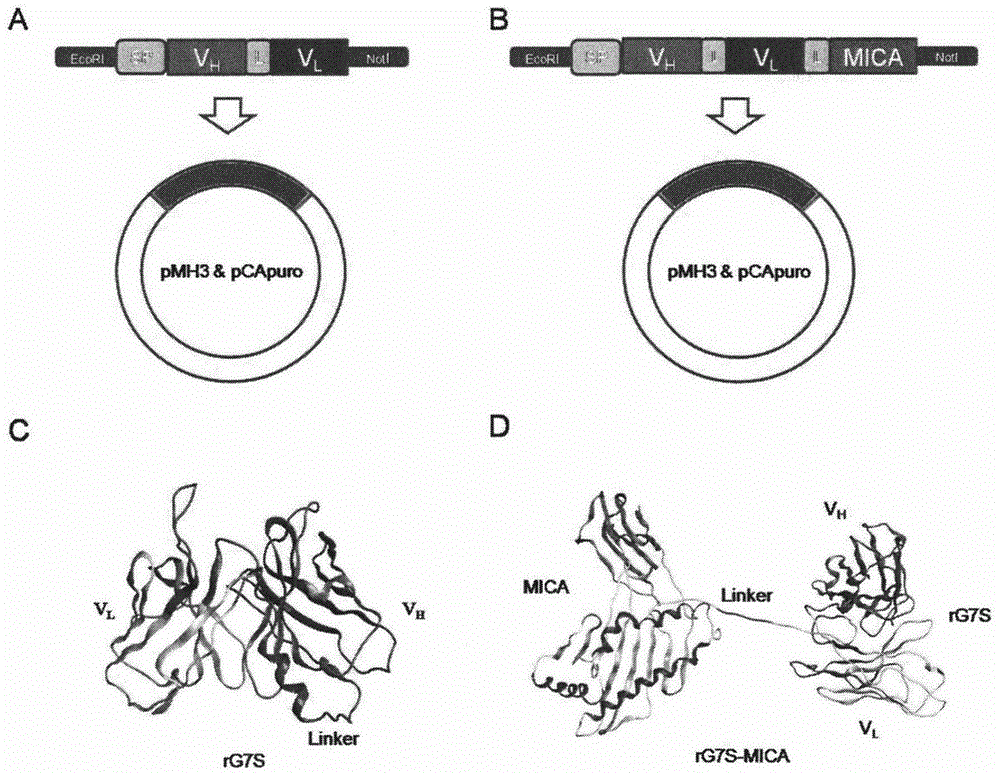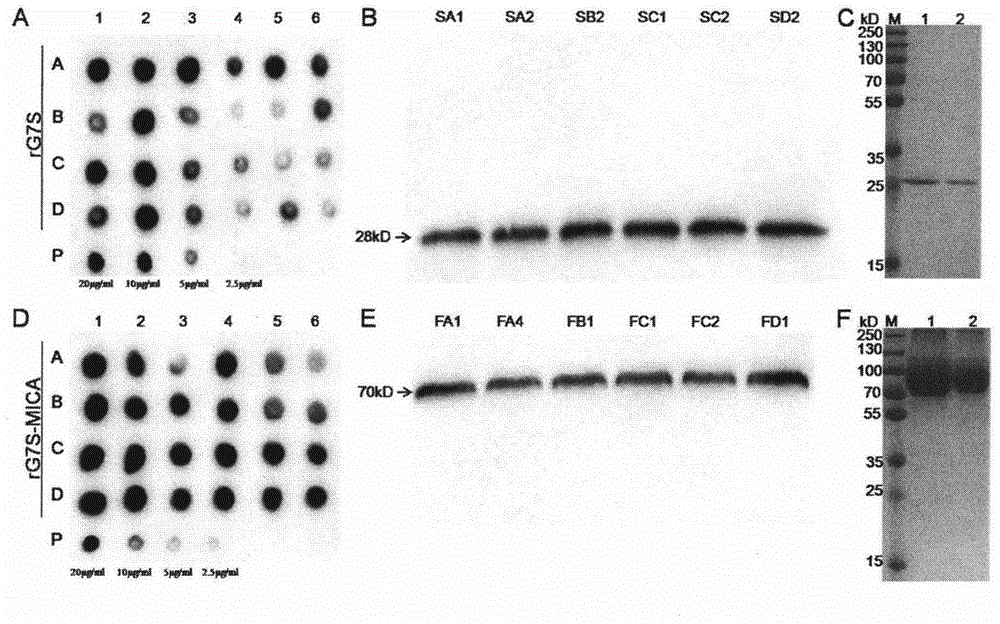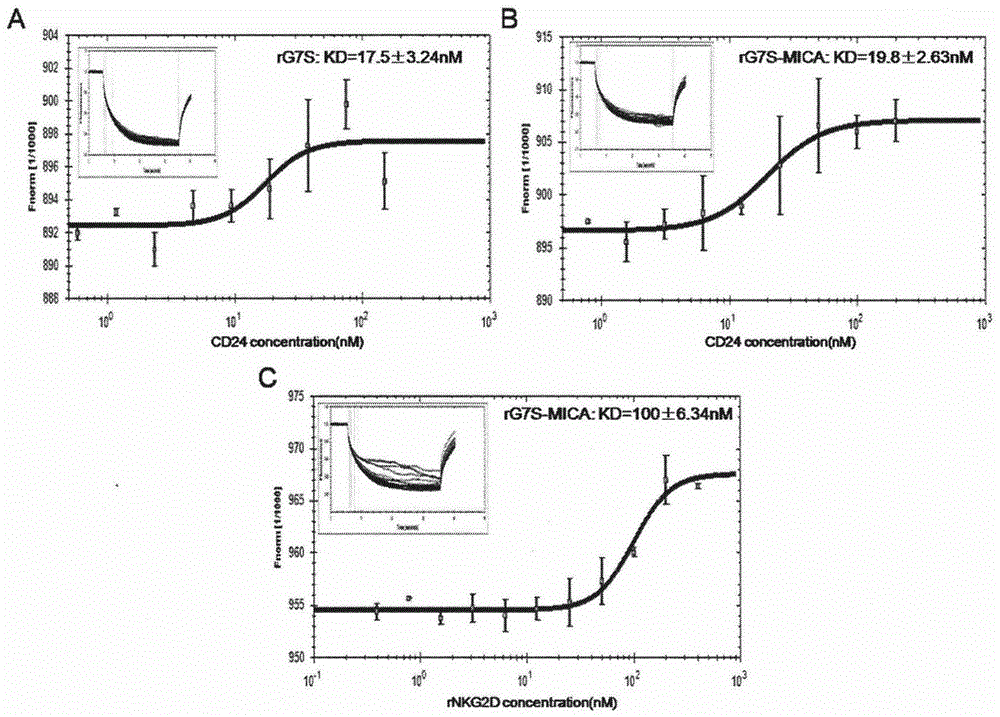Design and application of CD24 antibody fusion protein
A technology of fusion protein and CD24, applied in the field of body specific binding
- Summary
- Abstract
- Description
- Claims
- Application Information
AI Technical Summary
Problems solved by technology
Method used
Image
Examples
Embodiment 1CD24
[0035] Example 1 Construction of CD24 Antibody Fusion Protein rG7S-MICA
[0036] Firstly, CHO-biased codon optimization was performed on the genes of CD24 single-chain antibody rG7S and the extracellular region 1-3 of human MICA. Further, using the optimized two genes as templates, overlapPCR technology was used to pass the flexible peptide G 4 S was used for gene splicing and enzyme cutting sites at both ends were added, the PCR products were detected by 1% agarose gel electrophoresis, and the target gene fragment was recovered by the agarose gel recovery kit. The target gene and pMH3 / pCApuro were digested separately, and the target gene and plasmid fragments were recovered after digestion. T4 ligase was ligated overnight at 16°C to obtain two recombinant plasmids (rG7S-MICA-pMH3, rG7S-MICA-PCApuro). CaCl 2 The ligation product was transformed into Escherichia coli DH5α for amplification and storage.
Embodiment 2CD24
[0037] Example 2 Expression and purification of CD24 antibody fusion protein rG7S-MICA
[0038] First, the two recombinant plasmids rG7S-MICA-pMH3 and rG7S-MICA-PCApuro were introduced into CHO-s cells by electric shock method (in a 0.4cm electric shock cup, 160V, 15ms) in equal proportions, and two rounds of pressurized selection (DotBlot Dot blot semi-quantitative screening) to obtain cell lines stably expressing rG7S-MICA. The screened high-expression cell lines were expanded step by step, the cell culture fluid was collected, and the samples were filtered through a 0.22 μm filter membrane, followed by nickel ion affinity chromatography purification, and finally a large amount of the target protein was obtained. 12% SDS-PAGE protein electrophoresis and Western blot for preliminary verification of the target protein.
Embodiment 3
[0039] Example 3 Affinity analysis of rG7S-MICA by micro-thermophoresis technique
[0040] In this experiment, MonolithNT.115 was used as an MST-dependent detection instrument to analyze the interaction between the antibody fusion protein rG7S-MICA and CD24 / NKG2D: A. Using MonolithNT TM The protein labeling kit is used for fluorescent molecular labeling of rG7S-MICA. A constant concentration of rG7S-MICA was mixed with serially diluted CD24 naked peptide or NKG2D molecules, each sample was sucked by a standard capillary, and the intermolecular affinity constant was determined by detecting the change in the thermophoretic efficiency of protein molecules after rG7S-MICA and CD24 / NKG2D combined.
PUM
 Login to View More
Login to View More Abstract
Description
Claims
Application Information
 Login to View More
Login to View More - R&D
- Intellectual Property
- Life Sciences
- Materials
- Tech Scout
- Unparalleled Data Quality
- Higher Quality Content
- 60% Fewer Hallucinations
Browse by: Latest US Patents, China's latest patents, Technical Efficacy Thesaurus, Application Domain, Technology Topic, Popular Technical Reports.
© 2025 PatSnap. All rights reserved.Legal|Privacy policy|Modern Slavery Act Transparency Statement|Sitemap|About US| Contact US: help@patsnap.com



